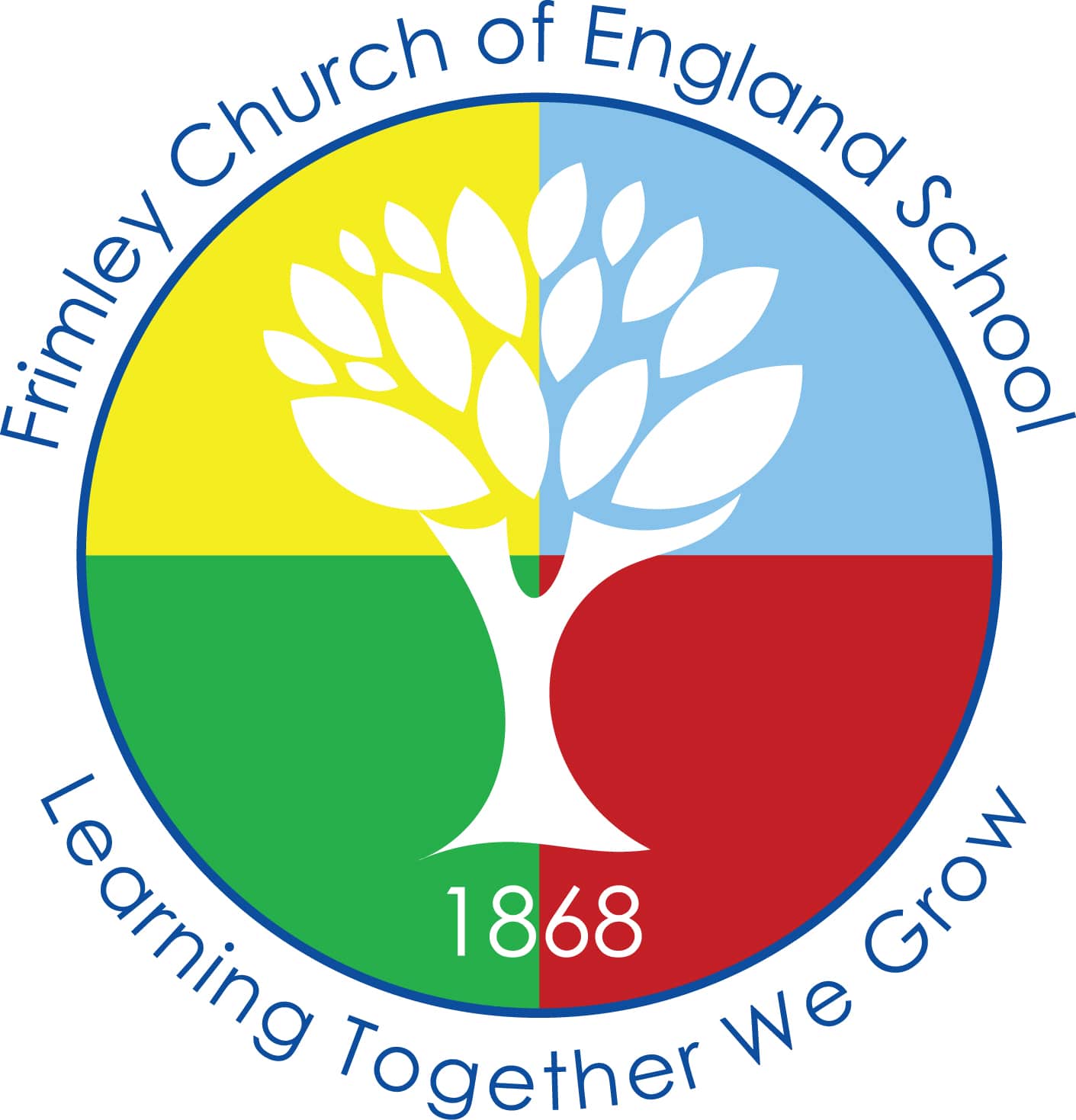Reading
The teaching of reading should foster a lifelong love of reading.
Leader: Abi Cronin
Librarian: Sandra Whiting
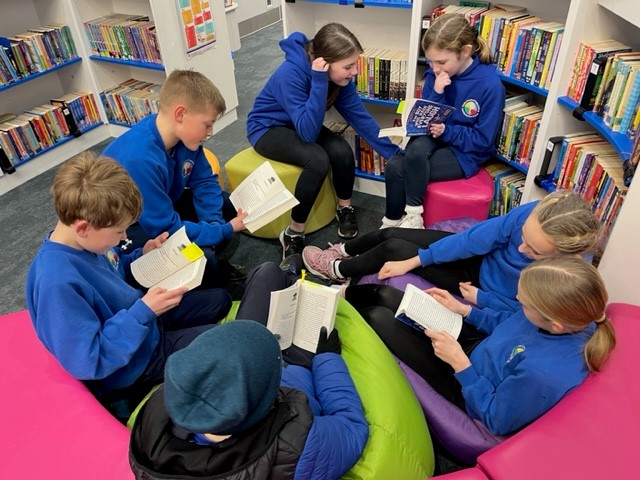
Intent
At Frimley, we believe that the teaching of reading is integral to a child’s understanding and appreciation of the world around them; a platform that allows our children to see beyond what they know, share in cultural experiences and develop the vocabulary they need to effectively express themselves. Our reading curriculum strives to create a balance between instruction in cognitive reading processes which develop the children’s technical and comprehension skills and affective experiences which foster a lifelong love of reading.
Implementation
This curriculum is delivered through synthetic phonics, a whole class reading approach, home reading, reading across the curriculum, regular opportunities for independent reading and hearing quality texts read aloud every day. All of these are essential components as they offer the range of opportunities needed to develop fluent, enthusiastic and critical readers. Pupils are provided with retrieval challenges in all lessons to support retention and long-term memory of previously taught areas. Monitoring of Reading provision will be an ongoing process throughout the academic year. English leaders will monitor lesson flipcharts (including teacher models and inputs, learning scaffolds, resources used and learning activities), learning outcomes through scrutiny of work and pupil and staff voice – both formally and informally. Assessment outcomes will also be monitored and analysed to identify wider school trends. Subsequent actions will be taken in response to all formats of monitoring to continually improve reading provision.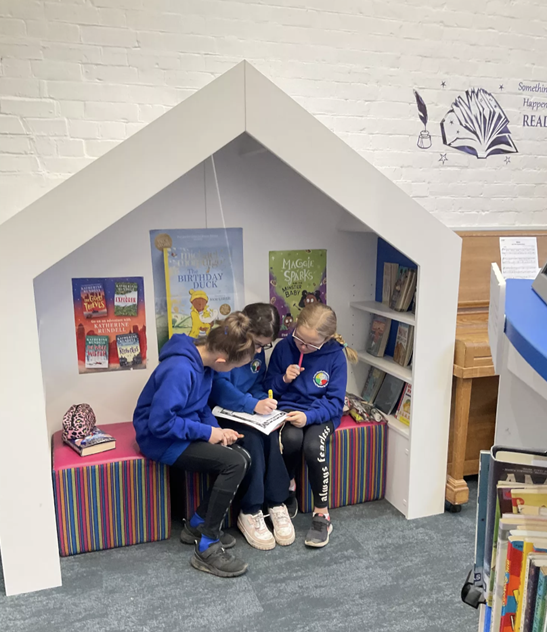
At Frimley all classes follow a structured 5 day approach to reading activities. All sessions are interactive and teachers facilitate speaking and listening opportunities, with children working hard individually. Engagement promoted through regular use of think-pair-share, responses on mini-whiteboards and collaborative tasks. Children explore their class reader in two sessions a week so that they are able to effectively apply their reading skills to a familiar text. Those children who require additional support in their reading are supported with phonics interventions and regular reading in school. Their reading is tracked through PM Benchmarking.
High quality texts and passages are chosen, appropriate to the expectations of the year group or ability of children, and teachers use this to model the application of the agreed reading skills. Children are taught to notice breakdown in reading - identifying words/phrases they don’t understand and strategies to fix breakdown in meaning. Children are taught to relate the text to themselves, previous reading experiences and the world around them.
Further to modelled sessions, children have the opportunity to read texts with greater independence and apply their skills when responding to the wide range of domain questions. More complex questions are evaluated between wider groups and teachers model how to refine answers to a high standard.
Reading activities build upon the KS1 experience and phonics are taught across the school where necessary. A wide range of rich, stimulating texts, both fiction and non-fiction, are available for pupils in the classrooms and library. We provide the children with a variety of reading experiences which leads to confident readers, who are happy to discuss their opinions on a variety of different styles of text. Reading schemes are used to support children as they develop their abilities. These ensure a structured progression in reading, alongside the teaching of phonics. Intrinsic teaching of reading, based on rich and varied texts is a priority to ensure children read for deeper meaning. The school runs annual book days and book fairs to promote reading.
Impact
- Pupils will enjoy reading across a range of genres
- Pupils will have an appreciation of our rich and varied literary heritage
- Pupils will be able to read easily, fluently and with good understanding
- Pupils will be in the habit of reading widely and often, for both pleasure and information
- Pupils of all abilities will be able to succeed in all reading lessons
- Pupils will use a range of strategies for decoding words, not solely relying on phonics
- Pupils will have a good knowledge of a range of authors
- Pupils will be ready to read in any subject in their forthcoming secondary education
- Parents and carers will have a good understanding of how they can support reading at
- home, and contribute regularly to homework
- The percentage of pupils working at EXS within each year group will be at least in line with
- national averages
- The percentage of pupils working at GDS within each year group will be at least in line with
- national averages
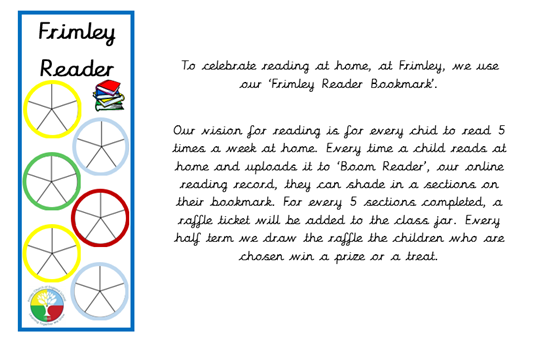
In response to Mrs Whiting sharing photos of our World Reading Day events, Hampshire School's Library Services responded with:
'It is great when so much effort is put into an event that will really celebrate reading for pleasure and gives children the message that books are so important. Well done!' Aisling (from SLS)
How we read with children at Frimley 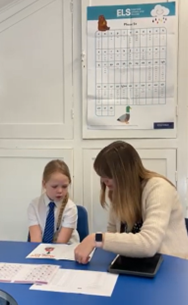
Here is a demonstration of a 10 minute reading session with Mrs Djeneralovic (one of our Phonics Leaders). The child is reading a decodable book.
Things to have ready before you read with a child
- A decodable text or other suitable level book
- A phonics mat appropriate to phonics knowledge (these can be found on the Phonics page of our website- Frimley Church of England School - Phonics)
- Mnemonics to prompt and support (for example, ay - play all day, these can be found on the Phonics page of the website)
- Pen for directing reading
Step 1- Introduce the book
See the video link for how to do this: Reading video 1
- Ask about the cover
- Read the title
- Ask simple questions to ensure the child has an understanding of the content.
Step 2- Ask the child to read the inside cover
See the video link for how to do this: Reading video 2
Read the:
- focus sounds -use mnemonics
- harder to read and spell words (HRS). The sound mat for this is on the phonics page.
- focus words - check they understand each one. This is particularly important for EAL children.
Step 3- Begin to read the text
See the video link for how to do this: Reading video 3
- Give the child time to sound out and blend.
- Encourage your child to use their reading finger to track as they read.
- Point out if a word is harder to read and spell (HRS) as it cannot be sounded out.
- Repeat the sentence back to the child to help them obtain meaning and model expression, reading of punctuation.
- Ask them to repeat it if more fluency was needed.
- Ask questions to check understanding as you go.
Step 4- Engage with the child and the text
See the video link for how to do this: Reading video 4
- Encourage the child to try again - use expressions such as try again, let’s look at this one again, focus again on this sound, can you find it on the grapheme mat?
- But do give support if needed - it is important that the child enjoys the reading experience.
- Refer back to the inside cover for words that were not initially understood.
Step 5- Think about other reading skills
See the video link for how to do this: Reading video 5
- Ask children about punctuation used in the text.
- Can they name it?
- Can they explain why it has been used?
Step 6- Finishing up
See the video link for how to do this: Reading video 6
- End positively with lots of praise.
- Be specific about what they have done well eg. blending, expression, reading a word on sight that had been previously decoded.
- Record reading on Boom Reader - ensure a comment is made and tricky words, graphemes noted for future reference.
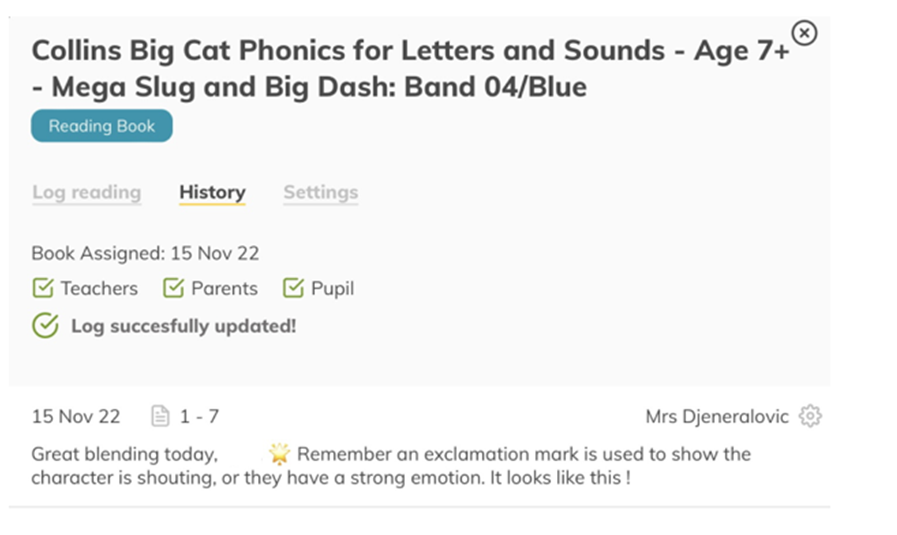
For parent guides to Boom Reader and for recommended books for your child please look at the documents below:
